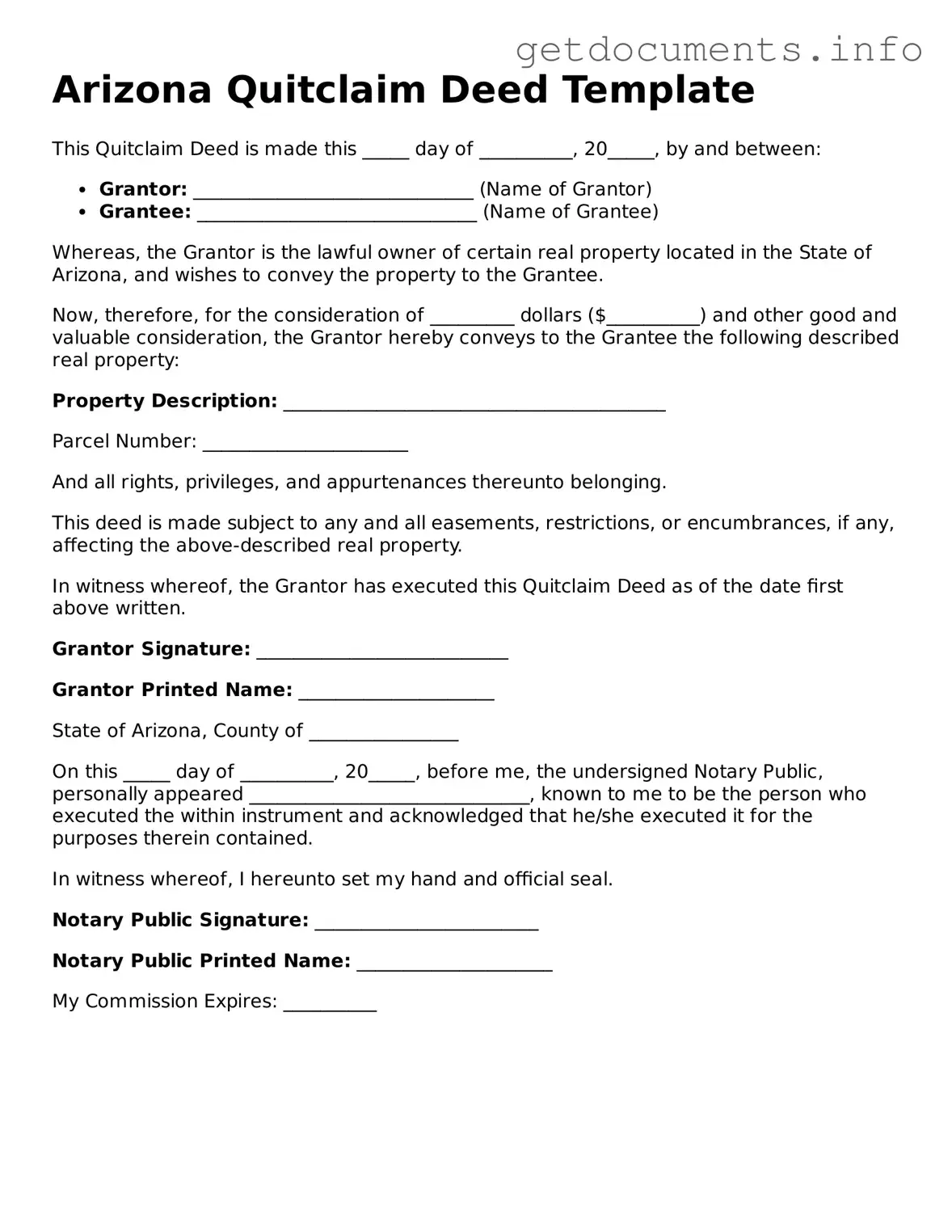Free Quitclaim Deed Template for Arizona
A Quitclaim Deed is a legal document that allows an individual to transfer their interest in a property to another person without making any guarantees about the title's validity. This form is commonly used in Arizona for various purposes, including property transfers between family members or to clear up title issues. If you are ready to complete your property transfer, please fill out the form by clicking the button below.
Access Quitclaim Deed Editor
